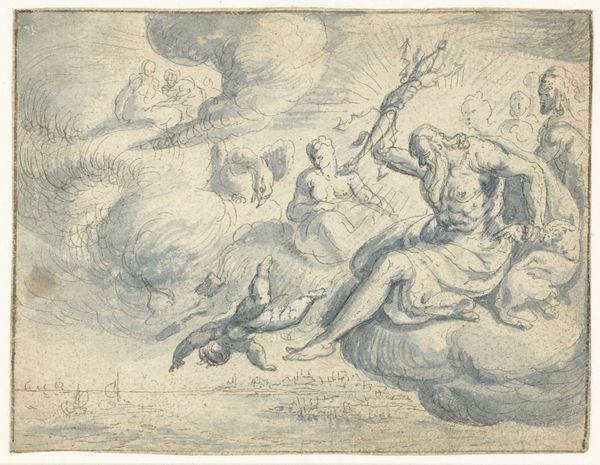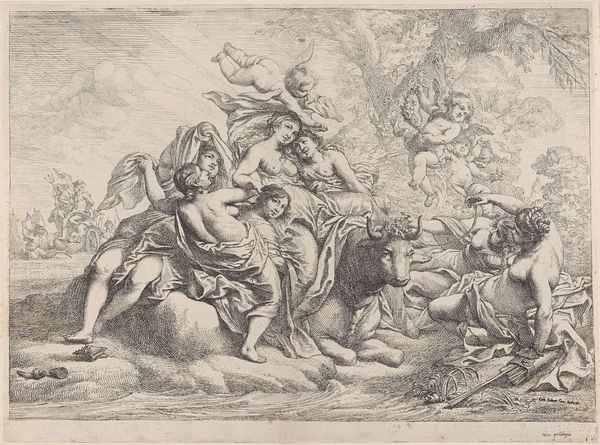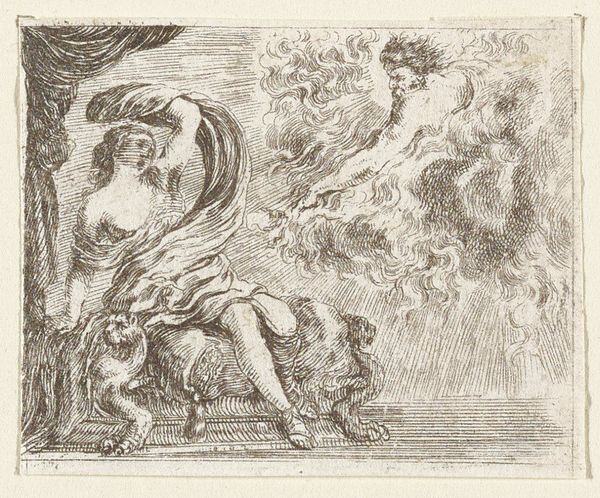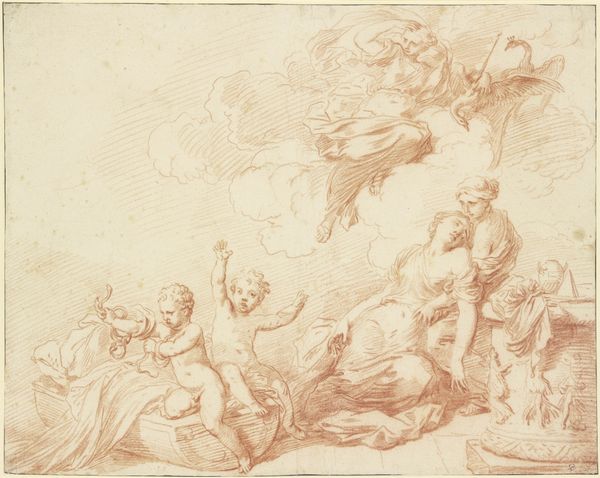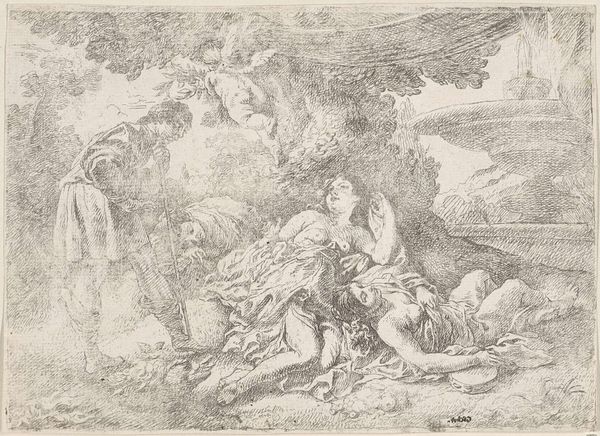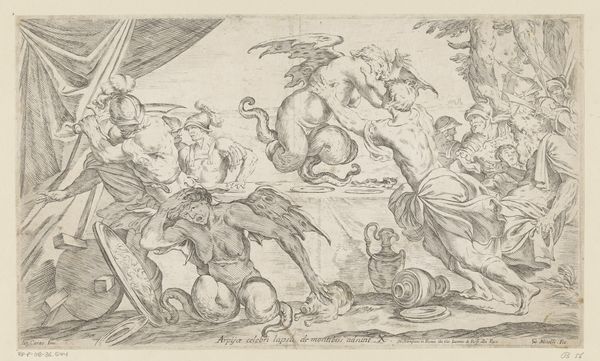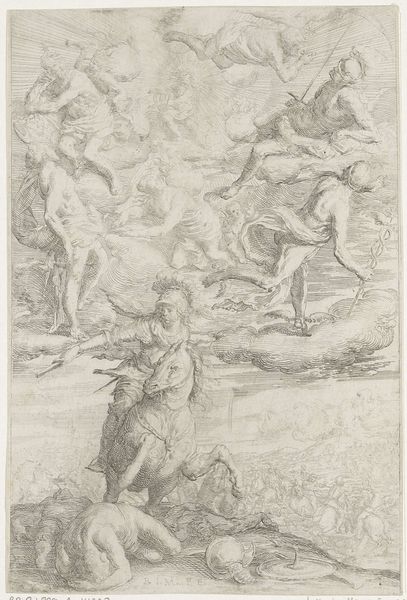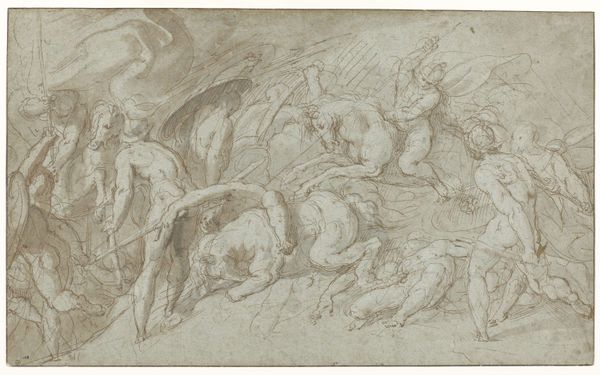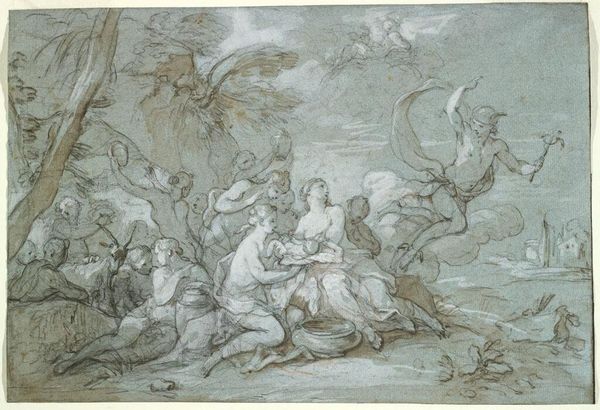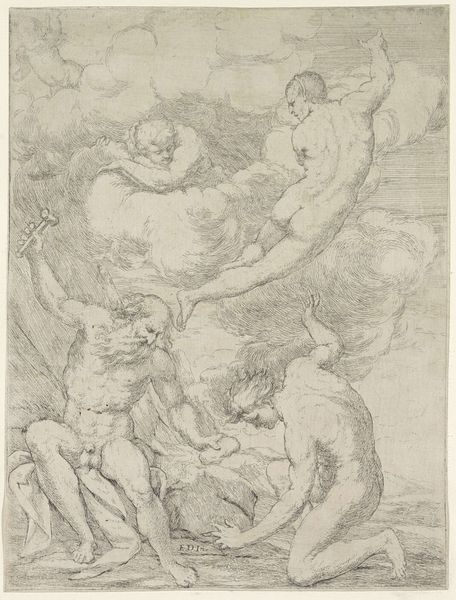
print, engraving
#
baroque
# print
#
landscape
#
figuration
#
history-painting
#
engraving
Dimensions: height 196 mm, width 282 mm
Copyright: Rijks Museum: Open Domain
Curator: Welcome. We are standing before "Nessus Slain by the Poison Arrow of Hercules" an engraving by Cornelis Schut, likely created between 1618 and 1655. It is currently held here at the Rijksmuseum. Editor: The first impression I get is dynamism. There’s a real sense of motion, an upward thrust, in this print. Even though it's static, it feels almost frantic, full of Baroque energy. Curator: Absolutely. Looking deeper, it’s vital to consider the classical myth at play. Nessus, the centaur, attempts to assault Deianira, Hercules’ wife, and in retaliation, Hercules shoots him with a poisoned arrow. The scene captures that pivotal moment of vengeance and betrayed trust. The theme engages with ideas about masculine honor and the punishment of sexual assault, ideas still extremely relevant to modern debates. Editor: Yes, but look at how the composition reinforces that narrative. Hercules, barely visible in the background, represents divine retribution. Nessus’ diagonal body forms the primary plane—the foreshortening creates a powerful visual, focusing on his centaur struggle. Then Deianira—seemingly passive—sits poised for action on his back, she’s above, and holding the symbolic power. It draws the viewer’s eye around in an elliptical motion from left to right. Curator: The role of Deianira is key to understanding the full story. Her later role in Hercules’ death, unknowingly poisoning him with Nessus’ blood, offers a fascinating commentary on the long-term repercussions of violence and the insidious nature of revenge passed from man to woman. Editor: Interesting, I suppose one cannot ignore those narratives, but note how Schut used light and shadow to sculpt form; how these visual choices, that hatching technique and tonality, are essential for interpreting what the characters embody. Curator: I’m drawn to this as an interesting case study on sexual assault. Its visualization reflects historical anxieties, or potential sympathies toward this story. This becomes relevant today, when we're constantly working to reimagine harmful narratives in art and challenge systems of patriarchal power. Editor: I appreciate you highlighting this in its complex wholeness, which prompts us to be mindful as the narrative tension of figures like Nessus remain in flux over time. Curator: Ultimately, viewing artwork like this is to re-examine where that conversation continues now in contemporary society and whether or not our assumptions change.
Comments
No comments
Be the first to comment and join the conversation on the ultimate creative platform.
